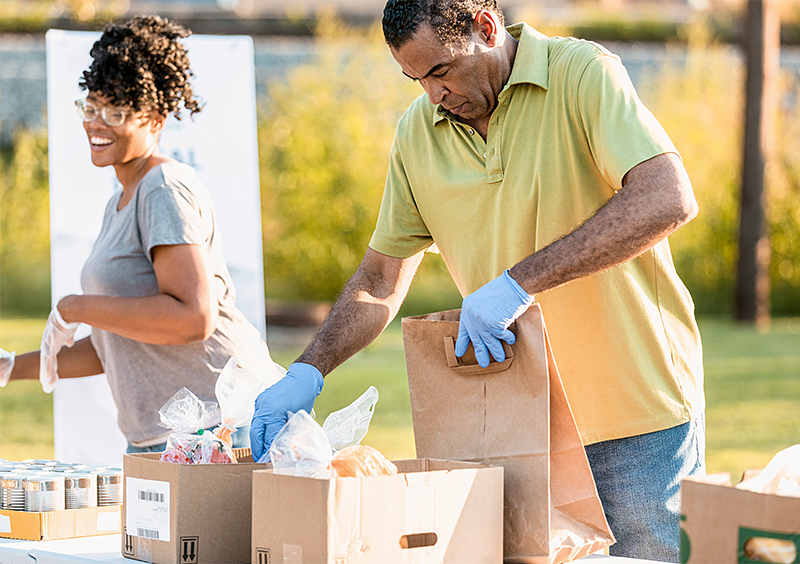Liza Sunley,’96 BEd, knows a lot about working in the non-profit sector. She is the CEO of the Edmonton Humane Society and has worked for many non-profit organizations. In fact, she started her career as a volunteer. What began as a summer opportunity to promote safety and injury prevention turned into a long career of providing support and services to people and animals. Sunley shares what she has learned.
1: Understand that relationships are the key to success.
Working in a non-profit is all about the relationships you have with people inside and outside your organization. This means engaging with community members, policy makers, people who access the supports and other organizations that are tackling similar issues. Being transparent about your needs, whether with another organization, stakeholder or community member, allows for a healthy, respectful relationship, Sunley says. “It’s really hard to do the work without the whole community involved.”
2: Play to people’s strengths.
Every non-profit has a different goal, but most will do better work when they focus on boosting the positive steps clients are already taking, rather than looking solely at problems. “When we give people the opportunity to share their stories we get a much better understanding of what they need,” Sunley explains. She says a cookie-cutter approach can’t possibly serve everyone, so she recommends customizing the support each client receives based on their circumstances.
In Sunley’s experience, people accessing services are resilient and can articulate what they need; the rest of us just need to listen. Non-profit organizations can start by acknowledging the strengths that each client brings — their community network, sense of self or being an involved parent, for example. “We tend to focus on where deficiencies are and what we define as deficiencies,” Sunley says. “We need to focus on the strengths that people bring.” While working at the Bissell Centre, Sunley and her colleagues played to their clients’ strengths by bringing together artists and people who had been affected by the opioid crisis to create a manual about healing called Cycles and Circles.
3: Think beyond the obvious.
Imagine your local community group’s holiday food drive and you might think of the long lines of clients waiting for food. Is there another approach? During and outside the holiday season there are other ways to provide food to a community in a creative way, says Sunley. Programs like a community kitchen or cooking classes where people can come together to learn, create and just spend time getting to know each other are great ways to engage clients who are accessing services. Food is an entry point into people’s lives and opens the door to understanding who they are and the services they need. Inviting people to demonstrate how to make a cultural dish creates an environment where people can feel confident and take on a leadership role, Sunley says.
Don’t be afraid to get creative. Try out cross-cultural cooking, a themed arts-and-crafts night or even a karaoke night. The point is to think outside the box to engage the community members so they can find out about and help build non-profit services.
4: Understand advocacy and communication.
Communication is a big part of non-profit work. You’re communicating with clients and other organizations about the services that your organization provides, but you’re also communicating with the public about why donations are important and how you plan to address structural barriers, Sunley says. She always aims to ask the right questions to the right people. Ask clients about their experiences, what they think are the best solutions, what barriers they face and what services and supports they need.
On the flip side, talk to policy-makers about what they can do to address the barriers that are affecting a particular group. That doesn’t mean you have to go and shake down the Prime Minister, but rather address the policies within your local community, Sunley says. For example, the Edmonton Humane Society saw that local pet owners were facing transportation and cost barriers to having pets spayed and neutered, so it partnered with the Bissell Centre to offer a mobile spay and neuter opportunity for low-income families with pets.
Another way to open the lines of communication with the clients you serve is to share your story. “I was diagnosed with ovarian cancer,” Sunley says, “and when I would tell my story, somebody would invariably come up to me to tell theirs.” Sharing your story can help other people in the same situation find the support system they’ve been looking for.
5: Volunteer.
Volunteers are an integral part of the non-profit sector. They help run programs and provide services and community support. Volunteering is a great opportunity for people to get relevant work experience and get involved in the things they’re passionate about. It creates space to learn, meet new people and share information. “Volunteering is critical. It has brought a lot to my life,” Sunley says. “It’s a great way to get involved and do what you love and find fulfillment within your community.”

We at New Trail welcome your comments. Robust debate and criticism are encouraged, provided it is respectful. We reserve the right to reject comments, images or links that attack ethnicity, nationality, religion, gender or sexual orientation; that include offensive language, threats, spam; are fraudulent or defamatory; infringe on copyright or trademarks; and that just generally aren’t very nice. Discussion is monitored and violation of these guidelines will result in comments being disabled.